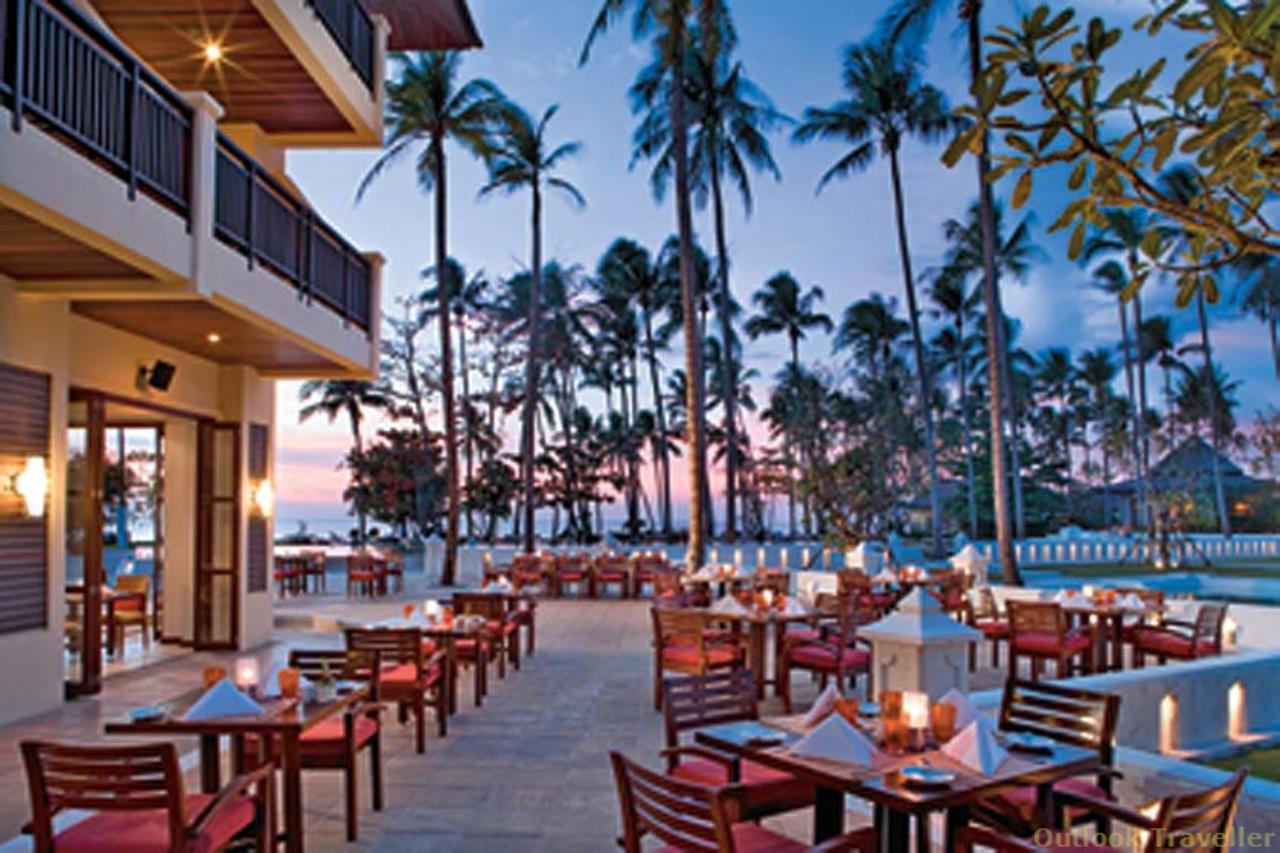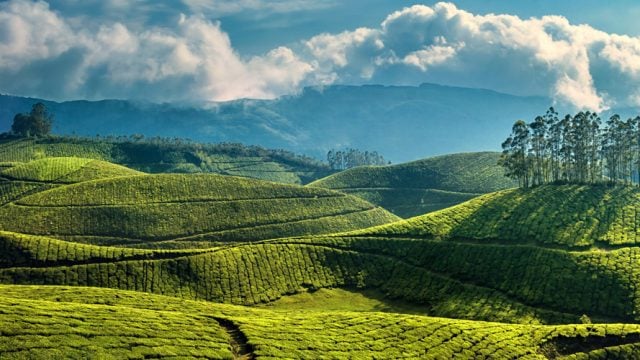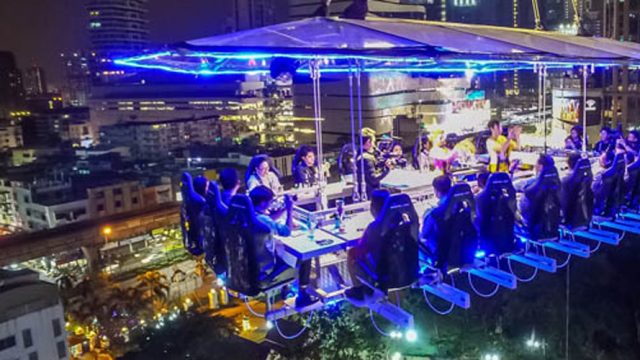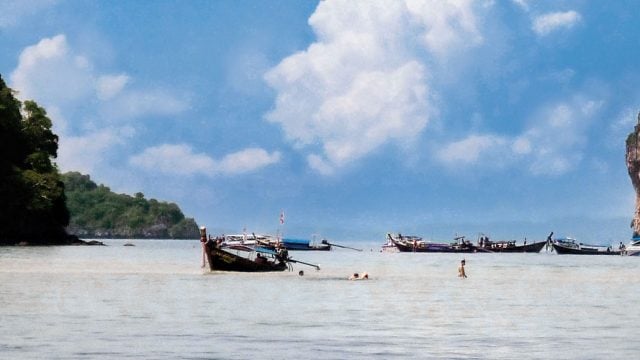Picture this. Seated at a corner table, in front of French windows that look onto the longest,
Ferrying away from the pier, the impressively Hollywood style ‘Welcome to Koh Chang’ fading slowly out of sight, you think perhaps there are two sides to every island. The west and the east; the white sand beach and the mangrove forest; the multi-ethnic hippie-tourist and the taciturn local; the strikingly modern resorts and the small, immaculately constructed homes, tucked away where roads will not be allowed to reach. The tourist and the stubbornly not-tourist. Koh Chang (‘Land of the Elephant’; whether that’s a reference to the sleeping, swimming or strolling elephant-silhouettes on the beach, I haven’t been able to figure), the second largest of Thailand’s islands, was barely known until the beginning of the millennium. In Thai history, it’s associated with convicts and pirates and lost battles with the French. Now, it’s a national park, with some of the best marine life in the region, quiet beaches, island-hopping options and rainforest treks to boot. Over the last decade, the island has been pumped with investments in tourism and development—one for the sake of the other. Its human and physical geography has coped pretty impressively, considering this shift in persona. It’s a beautiful, beautiful place; you can stand at any number of points on the pleasurably undulating roads and look down to a perfect view. A slim line of white sand and palm, a sea that changes colour every second, a sky that is entertainment in and of itself: perfectly clear one minute, slate grey the next, now a dull sapphire, now agate. And this flanked by mountains of the deepest green, covered with thick rainforest foliage.
Amari Emerald Cove, where we stayed, was a more than comfortable exposure to the new Koh Chang. It’s an immaculately kept property, the largest resort the island boasts of, with some 165 rooms and a most gorgeous pool. The rooms are large and airy, with some lovely suites and views. There’s a spa to die for, with rooms flooded by sea breezes that make your Thai massage that much more mesmerising. There are a range of eateries, perhaps the nicest one the Cove Terrace, which overlooks sky, sea and pool, and where your lemongrass iced tea and khao phad kai taste many times better for the immediacy of ocean spray and the views.
Emerald Cove then was the backdrop to a quick and monsoony exploration of lovely Koh Chang. People told us that there was nothing to do in the town (no malls, no cinema) but that people came to stay for a month at a time or for regular weekend breaks. Our own holiday itinerary was intimidating, bursting at the seams with energetic touristy things to do. But something about Koh Chang—perhaps the kind of awkward tension between the tourist and local here, or maybe the dark clouds that moved in and out—resists the Thai island holiday label and urges you to look beyond.
So we headed off obediently for an elephant safari (first time on an elephant, I have to admit, and not happily). Daisy threw many tantrums while she walked us back and forth through cold streams and poky undergrowth (or maybe it was the compulsive overeating that was causing the constant rumbling-and-crapping). Our mahout didn’t talk much, but what he said brought to life stories of elephants that had journeyed from Surin to this far southern island, of people too, once farmers, who had migrated here when the tourist boom began, to set up new lives and personas for themselves. Despite the bikini-clad tourists riding bareback before us, the Ban Kwan Chang (‘Home of the Elephant Man’) camp—one of the best on the island we heard, since its safaris take you off the usual tracks and deep into the jungle—managed to conjure up a vivid picture of Koh Chang’s human history, its changing landscape and demographic.
En route, now through blinding rains, to Salak Phet, Koh Chang’s famous fishing village, we drove through parts of the island off the development radar. We spotted striking Thai homes perched on stilts, some of them so elaborate that they almost seemed out of place and time with their remote jungle locations. Along the winding drive, we heard stories of strong local resistance to construction of roads that would cut through the island, revealing another layer—less shiny, less glassy—of this fashionable new tourist haven.
A colourful lunch at the “best seafood restaurant on the island”, the quaint Salak Phet Seafood and Resort (with lovely rooms perched on stilts over the ocean), included yellow crab and green and red tempura, which considerably brightened the stormy day. Rendered immobile by all that squid and crab, we retreated into tourist indulgence with a Thai massage at the Emerald Cove spa. I sweet-talked my way into the best massage room in the spa, with French doors that open out to the beach, the palms along the coast almost sweeping over your bed. My body was stretched and pummelled into pure bliss, uncomfortable thoughts of a tropical island besieged by tourism quelled for the moment. Most importantly, my appetite was sufficiently roused to draw me back to the Cove Terrace for another Thai meal, this one cooked by me, in a fun and most TV show-like cookery class ever. (Yes, I can now make an excellent Thai spring roll.)
Despite the warnings about hazardous roads (hell, we come from Delhi), we got out of the car, on to a bike and zipped along the west coast by ourselves: the hip touristy stretch of White Sands and the newer finds further down south—Kai Bae, ‘Lonely Beach’, Bangbao, each with a still unblemished beach and palms playfully leaning into the frothy green-blue waves. The east coast of Koh Chang is a gorgeous tropical island, but even the west coast, tussling with backpackers and tourist money over the last few decades, still has a really distinctive vibe. Each area we drove past had various quaint shop windows and restaurants, a different crowd of both Thai and foreign tourists. Finally, as I was standing at the pier at Bangbao, on the southern tip of the island, looking longingly at the islands beyond, sipping delicious coffee from Trat, Koh Chang came together for me: it’s an island you want to get to know, to spend long days on and one that resists clichés as it cultivates the tourist sheen.
And from that secluded tropical island, we headed to…Bangkok. Our brief stay in the heart of the capital with perhaps the craziest coloured taxis ever was haunted by thoughts of the anti-government protests that rocked the city not long before. Our hotel, the Amari Watergate, looked over downtown Bangkok, a site for a lot of the action. Walking along the streets, past the blackened shell of Central World, one of Bangkok’s largest trademark ‘shopping centres’ was eerie, to say the least. The pace and intensity of life around this part of town was a reiteration of how quickly cities must forget and recover, rebuild and cover up their scars. Stumbling, before we knew better, into the vast, glitzy Siam Paragon with its high street stores and blinding prices was a shot of fashionable and young (so young) Bangkok. But slowly, dusk began to fall and more various types of Bangkok life began to gather in the streets. We were hypnotised by Siam Square, a maze of Soho-like streets just across the road from Siam Paragon, at each corner a funky shop or eclectic bar you can spend hours in, or an amazing set of faces that bewitch you, playing with the boundaries of gender with such ease and comfort. By 10pm, T-shirt stalls had morphed into 10-at-a-table parties, with countless beer bottles and fried things-that-moved: the atmosphere was electric.
The almost crazy-distorted vision of Bangkok on a Saturday night was complemented well by a visit to the Chatuchak weekend market—a much-documented, vast collection of everything you ever want or need (or don’t), shoes, chihuahuas, art, toilet bags, mussels, clothes, kitsch, film posters, bags, watches, snakes…phew. We only wound down after our sixth round of dimsums at the Watergate’s Chinese restaurant and barely made it to the airport.
Thailand—all-year-round honeymoon couples, moody elephants, anytime cloudbursts notwithstanding—has me craving for more.
The information
Getting there
Good connections and reasonable prices make Bangkok among the most accessible Southeast Asian destinations to get to from India—not a bad option for an indulgent long weekend. Thai Airways and Kingfisher offer Delhi-Bangkok return from Rs 14,800, and Cathay and Kingfisher have Mumbai-Bangkok fares starting from Rs 14,300.
Koh Chang is a bit more of a trek, but worth it. There are flights from Bangkok to Trat (Bangkok Air, approx. Rs 6,000 return), the closest airport. Kingfisher also has flights to Trat (fares for flights from Delhi and Mumbai start from Rs 22,000). Koh Chang is a 45-minute ferry ride or a four-hour drive from there.
The hotels
The Amari group, which runs a chain of hotels, resorts and spas in Thailand, has picked a spectacular location for the Amari Emerald Cove in Koh Chang. It has the signature Sivara spa, activities, games and sports centres and every routine amenity you would expect of a place like this. It is a large hotel, with 158 rooms and seven suites, but the service is always warm and personal. The views, of course, are striking. Tariff From $147 per night for a double. Contact +66-39552000, amari.com
The Amari Watergate in Bangkok is located in downtown Petchburi, bang in the middle of where the malls and bazaars are. Besides the Sivara spa, there is a shopping arcade (if you’re too lazy to step out, we suppose), limousine service, tour desk, valet service, the works. Tariff From $86 per night for a double. Contact +66-26539000, amari.com
Getting around
Koh Chang: You can hire cars from a choice of companies, for between Baht 1,200-1,500 a day. You can also order a taxi from the hotel or as you get off at the pier. But the best way to get around, for sure, is to hire one of the cool motorbikes on offer — from vintage Vespas to, well, serious bikes (Baht 150-300 a day, depending on the bike). Be sure to bargain.
Bangkok Pink or yellow taxis, of course! Skytrain (one-day pass Baht 120; bts.co.th) if you can, or be the tourist and jump into a festive-looking tuk-tuk (negotiate prices beforehand).
What to see & do
Koh Chang: The possibilities are many — snorkelling and all kinds of watersports, hiking, waterfall trek, spa, tattoo, bird-watching, island-hopping and more. Beaching, biking and shopping, and chugging a chang at a quiet shack on White Sands is one kind of holiday. Foraying into the jungles by elephant or on water is another (day-long elephant safari Baht 1,400). Another highlightis the Treetop Adventure Park, where you can swing across trees for two hours (Baht 800).
Bangkok: How to put this into a box? Walk a lot, shop a lot (even diehard anti-shoppers will be hypnotised), try the street food (everything from crispy pork to frankfurters-in-a-pancake on offer), visit a market, any of them, just to see how expansive the idea of shopping can possibly be.
When to go
High season is between October and March; the only really ‘low season’, however, is the monsoon, between July and September. If you want a quiet, lovely, rain-drenched island holiday, though — this is the time to go. Barely any tourists, and low prices!
Emerald Cove
Koh Chang
Thailand
Leave a Reply
You must be logged in to post a comment.





